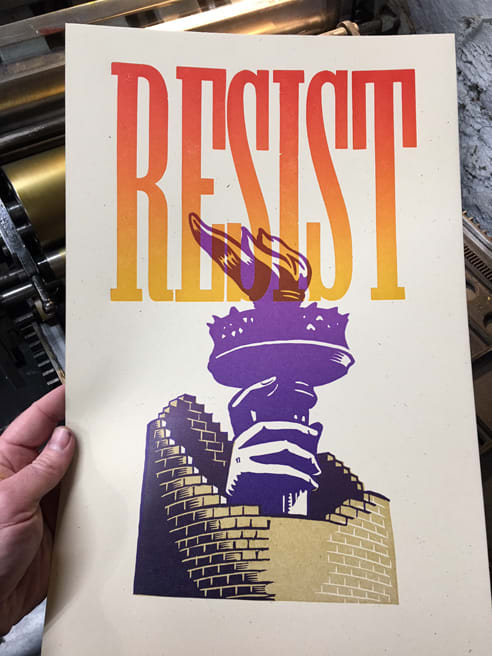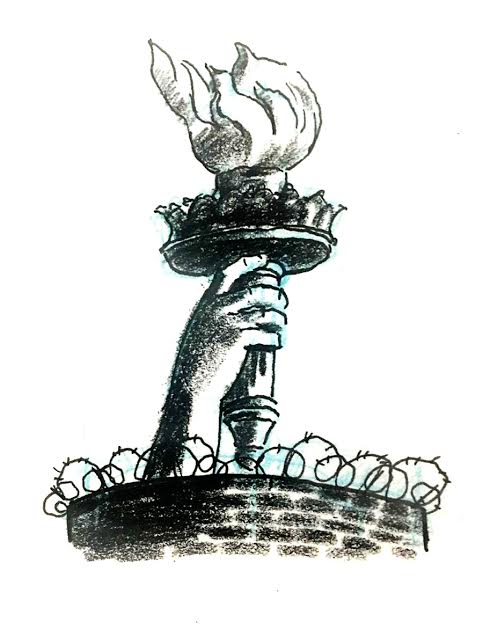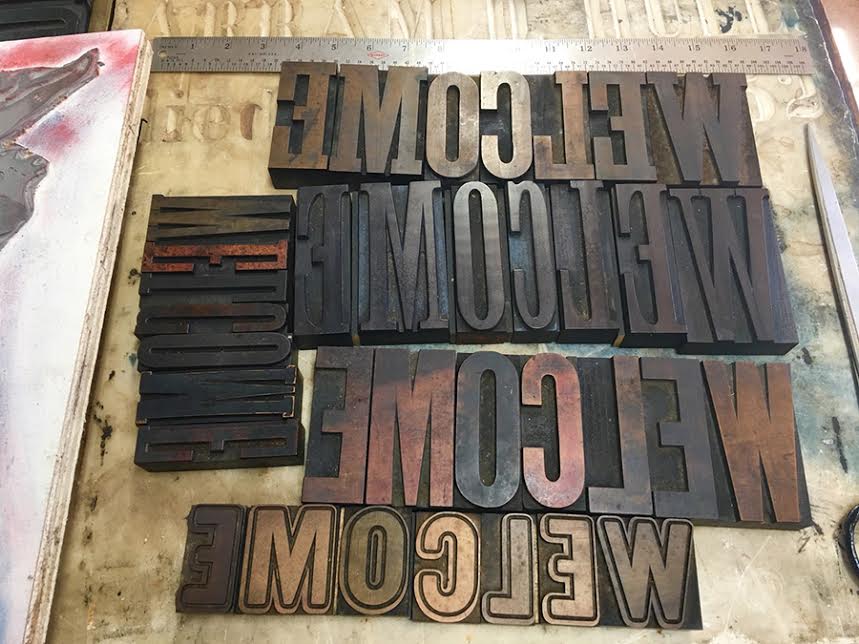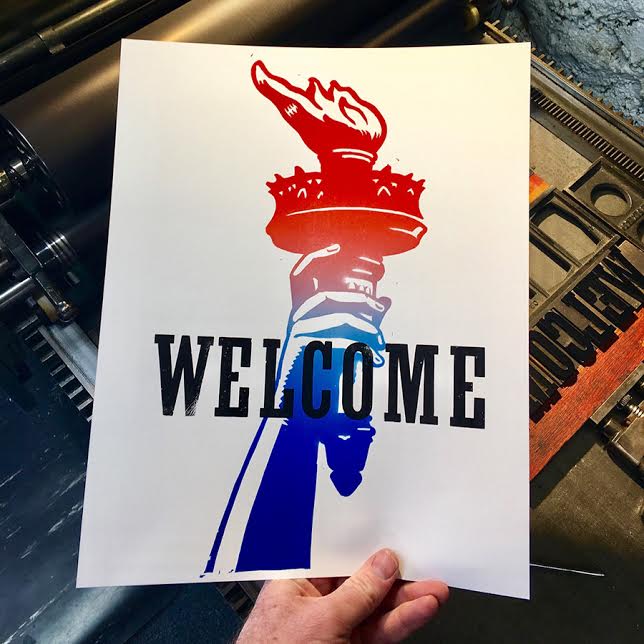
When illustrator Ross MacDonald heard about President Trump’s executive order on immigration, immediately barring entry to the United States for all refugees and all non-citizens from seven countries, he turned to his printing press. What resulted was a deeply personal and powerful poster: the Statue of Liberty’s hand and torch with a brick wall in the process of encasing them. Above her flame, not yet extinguished, in a glowing red-to-yellow gradient: RESIST.

“The RESIST poster was a personal project. I'm an immigrant, married to an American, and have been living in the U.S. for 30 years. Both of our children are foreign adoptees, so they’re immigrants, too,” MacDonald explained, noting that the image of a walled-in torch of liberty was one he had had for awhile, but with no time, or dire impetus, to make it. “I cut the linocut and set up the type on the press on the same day that Trump signed the travel ban, and was printing the poster the next morning, Saturday, when it first went into effect and protesters were flooding the airports,” he said.

While working on the design, which initially also included barbed wire around the wall, MacDonald consulted MFA Design Co-chair Steven Heller to see if something like it had been done before; Heller told him it hadn’t, and to choose a metaphor—wall or wire. “He was right,” said MacDonald. “Without the barbed wire, it was more powerful.” Heller featured the process and final poster on his design blog, The Daily Heller, alongside Emma Lazarus’ “The New Colossus,” the sonnet commissioned for and inscribed at the base of the Statue of Liberty, to which, Heller wrote, MacDonald’s work pays homage.

SVA Provost Jeff Nesin saw the post and wondered if there was a way to convey the image’s message—a sign of support to immigrants, refugees and their communities—in a more positive way. This became Liberty’s torch with the word “WELCOME,” another lino-cut with a bold, slab serif font, this time printed in bright red and blue. To further live up to and promote the design’s message, Heller and MacDonald decided to make buttons—silver-dollar sized pins—emblazoned with the image and text; the College backed the project, with a run of 10,000; and buckets of welcome buttons are currently available around campus. Students, faculty and non-SVAers alike can find them at key locations, including libraries, entrance desks to academic and administrative buildings, and residence halls.

MacDonald will produce a limited edition of letterpress Welcome posters as well. A printer at heart and vested in the weight of this project and this political moment, he noted that even when designing for the buttons he had to do it by hand, getting physical with materials. “There’s definitely something about an image or idea like this that calls out for linocut and wood type pounded into paper on a big iron press. Somehow I don’t think it would have the same impact if it was just done digitally.”
Kaori Uchisaka, director of the International Student Office, has begun using the design for department notices regarding the Executive Order and follow-up, hoping to help assuage the anxieties of the foreign students she and her colleagues work with and represent the interests of. Uchisaka has also distributed several hundred buttons to One to World, a local nonprofit organization serving the international education community, and plans to continue to do so at monthly network meeting, broadening their reach. “I'm grateful to Steve Heller and Ross MacDonald for making this possible,” she said.
“We hope it becomes something of a meme,” said Heller. “Graphic design is a tool we must use to show support and solidarity. This button is a very small part of a larger movement of resistance to misguided ideas and a positive statement in the face of negativity.”

